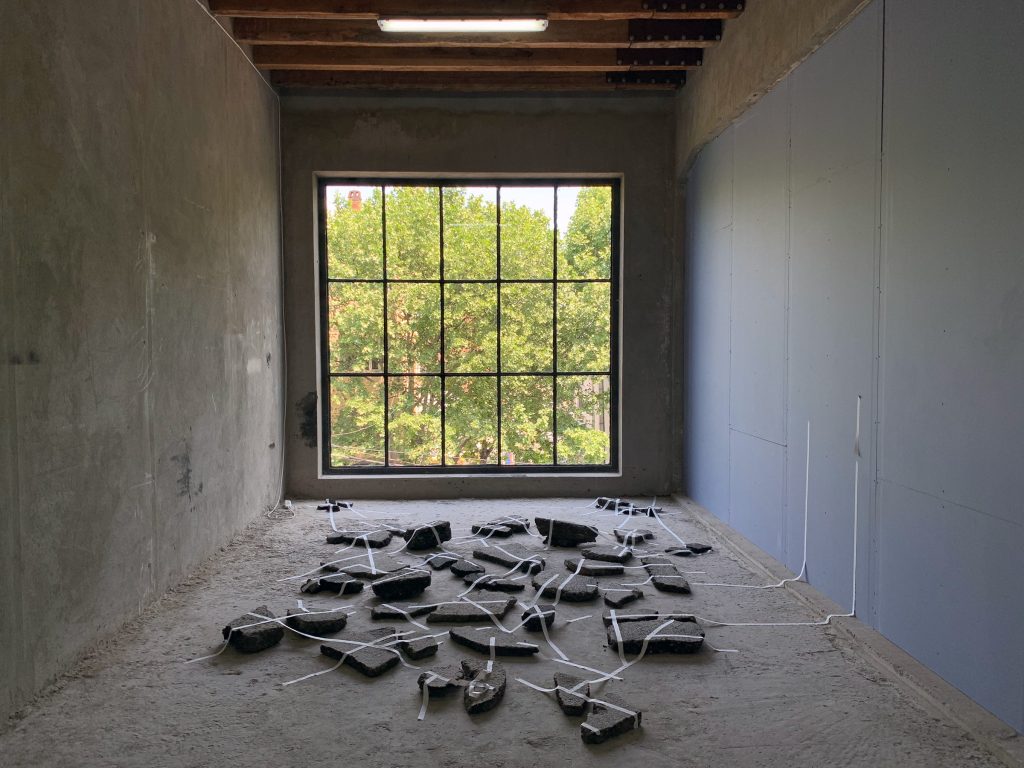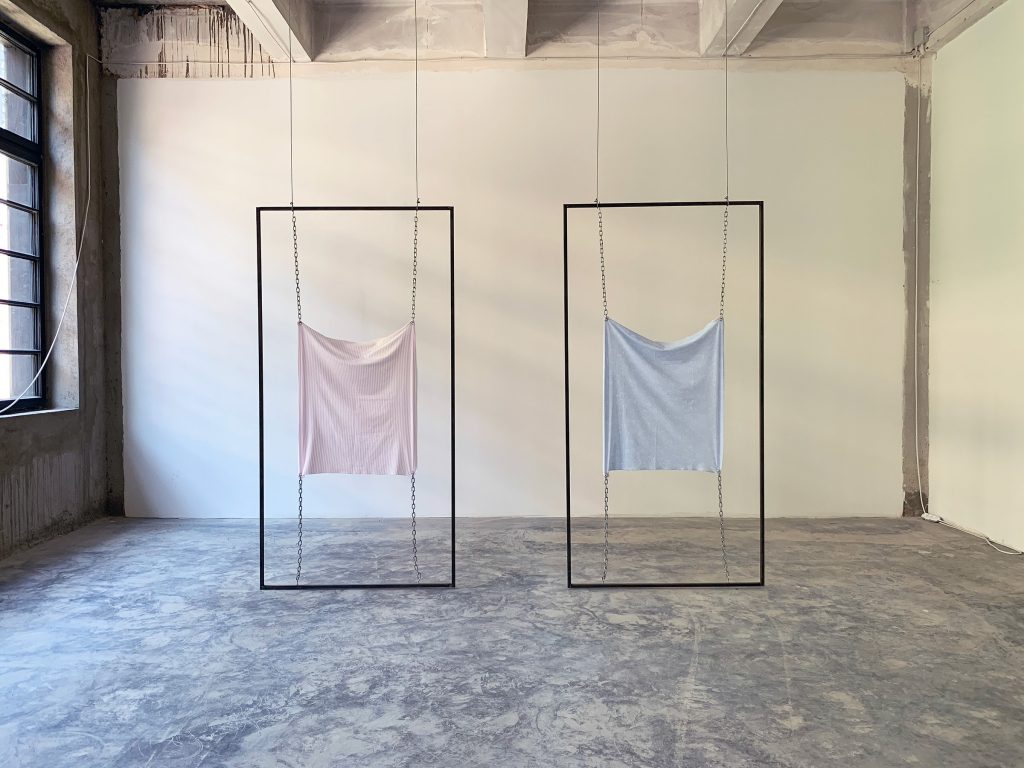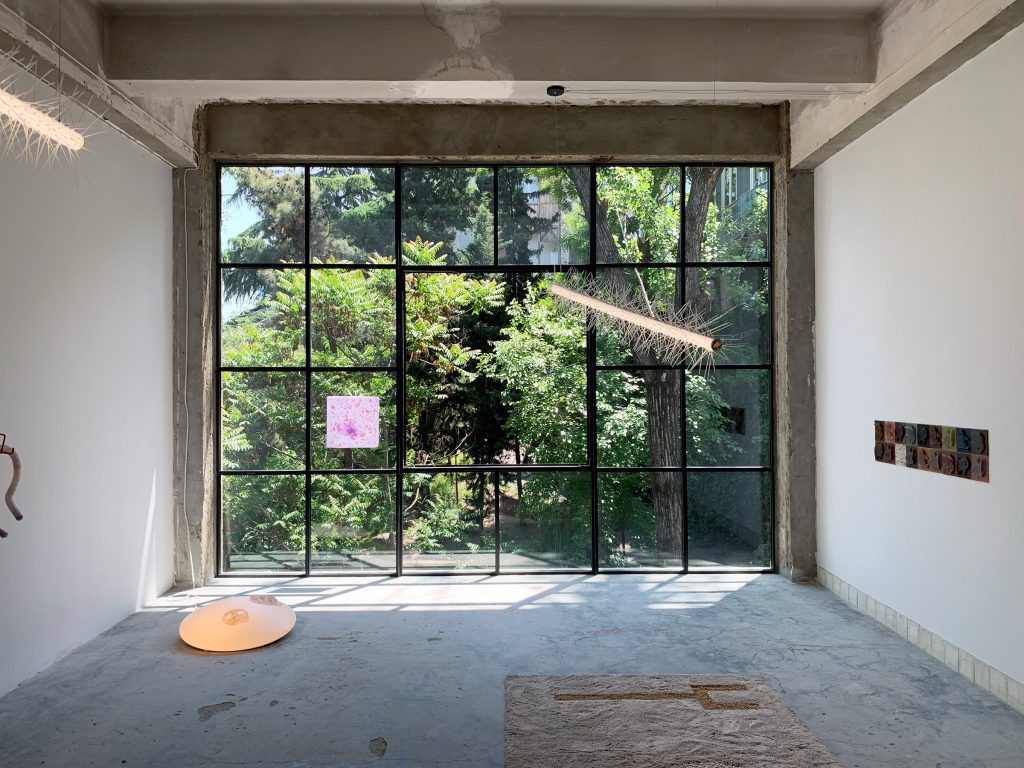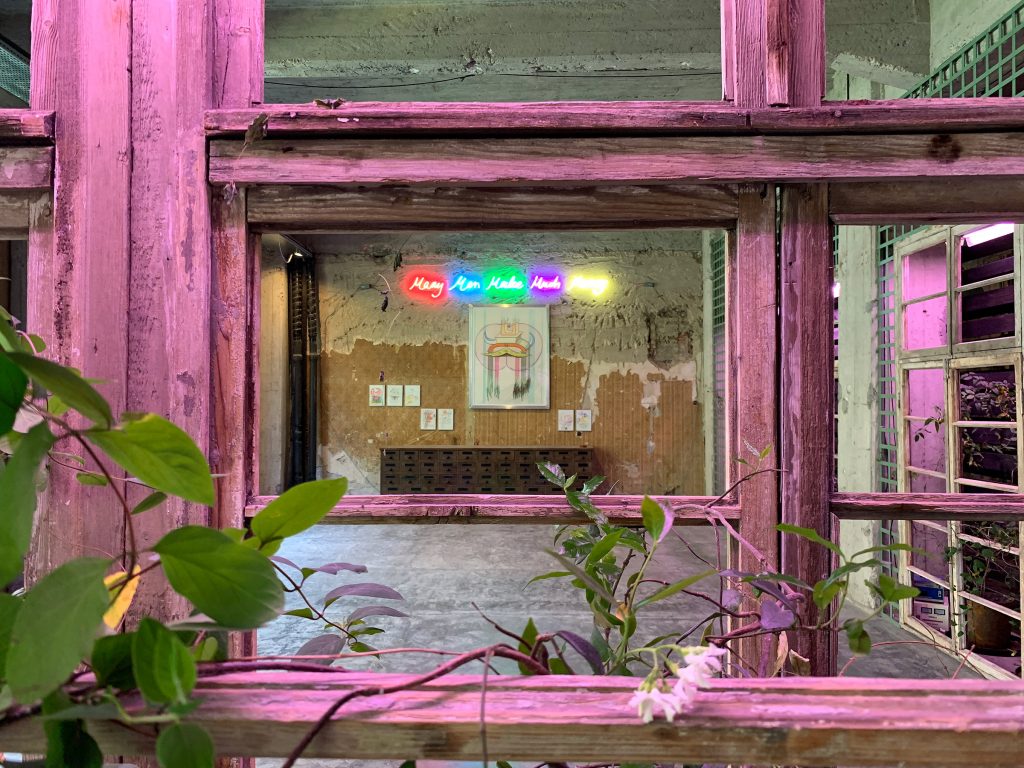Georgian Contemporary Art Organization Propaganda’s OXYGEN_Tbilisi No Fair
One non-commercial exhibition of epic proportions

A relative newcomer to the roster of global art events (which at this time, this year, includes both the Venice Biennale and the Whitney Biennial) OXYGEN_Tbilisi No Fair braids through four stories in Tbilisi, Georgia. This non-commercial group exhibition—organized and presented by the Georgian contemporary art organization Propaganda—surveys art currents through the capital city and beyond. OXYGEN makes for a most appropriate name, as each artist was given an entire room—most with a large window to the outside world—and allowed to do as they please. Within each space, the artists breathe. Their works, in turn, breathe and grow—ultimately commanding attention for their honesty, beauty or both. In the way that oxygen fuels fire, OXYGEN serves Georgian artists.

OXYGEN occupies the Stamba Hotel‘s D Block, a wing of the publishing house turned Design Hotel. To experience the exhibition, one must understand the three parts within: both the ground and third floor feature temporary installations, on display solely for the event. The fourth floor of the D Block holds artists in residence, also selected by Propaganda—some on site for three weeks, others up to three months. For OXYGEN, these residents open their doors for studio visits, showing off their work. All of this is accompanied by a satisfying schedule of events.

Director of Propaganda, Tina Asatiani, was a journalist by trade when she co-founded the organization. She happened to be integrated deeply into the Tbilisi art scene and realized that “nobody had begun an archive or research database of Georgian contemporary art,” she says. “There were so many things to do. There are. So I started to figure out what we could to do to express this—and ourselves—to the world. The first step was to sort out our [country’s contemporary art] history. Then, we needed to help artists invent the world of today.”
They formed, unofficially, in 2013, taking on task after task. As for their name, “Propaganda sounds powerful,” she continues. “You remember it when you hear it. We are in an emergence. We need this kind of word to be heard. We use the color red. We need this recognition.” Drawing support from various organizations, Propaganda was able to grow. When the owner of Stamba (Adjara Group owner and patron of the arts), Temur Ugulava became involved, they had the resources to build a platform.

OXYGEN was born from Propaganda, by way of an open call. “The goal was to allow people to see beyond what was selling commercially,” Asatiani says. But more importantly, it was to nurture artists. “People don’t have studios here. It’s very rare to have a studio in Tbilisi. That’s why we give the spaces to each artist. It’s more than giving them freedom, it’s giving them resource.” This is impactful in so many ways. In essence, it means the curatorial team selects the artists not the art. And the artists pursue their imaginations not sales.

“OXYGEN as an exhibition is a statement,” Asatiani continues. “This is the second time we are doing it. Last year, our first time, was about finding our place. This year it is about telling our story.” Their story is one of an organic art experience that climbs through the concrete like vines. Each room is a colorful blossom, grown from the influences bestowed upon it.

One of the few rooms serving multiple artists was granted to students from VA[A]DS University. It houses one of the exhibit’s most thoughtful pieces, by Mari Kalabegashvili. In a nearby room, Tezi Gabunia’s “Breaking News: Flooding of the Louvre,” places a small-scale replica of one passage of the famous French museum flooded with water it contrast with a large projection of the same wing flooding. From Project Artbeat, Maria Naveriani’s “MMMMM (Many Men Make Much Money)” also captivates as people enter the exhibition. And finally, Keta Gavasheli and Andria Dolidze’s “I had to spit out lukewarm. but no one cares about that anymore” enraptures with its mood and execution. Highlights are a challenge to select, however, as whole experience feels cohesive.

From opening night onward, a diverse audience passes through the exhibition’s doors. The crowds are of all ages, with the very youngest guests transfixed by color, form and movement. And as numerous languages tiptoe off the tongues of attendees, a strong turnout from Georgians demonstrates their respect and curiosity toward contemporary art, and the work of Propaganda.

Beyond the fair, Asatiani emphasizes the value of the archival work. “Everything new starts on the basis of something old. We are constructing the basement of Georgian contemporary art so that others can build from it,” she explains. From the Soviet era (when everyone was working in an institution to hone their practice for the use of the state) onward, there are gaps. “Our [contemporary art] history starts in the ’70s,” says Asatiani. “Our goal is to access state archives and combine that with what we’ve accrued to attempt a complete history.” This is a history wherein OXYGEN now plays a crucial role.

OXYGEN_Tbilisi No Fair is on now through 26 May, with talks and presentations peppered throughout the timeline.
Images by David Graver












